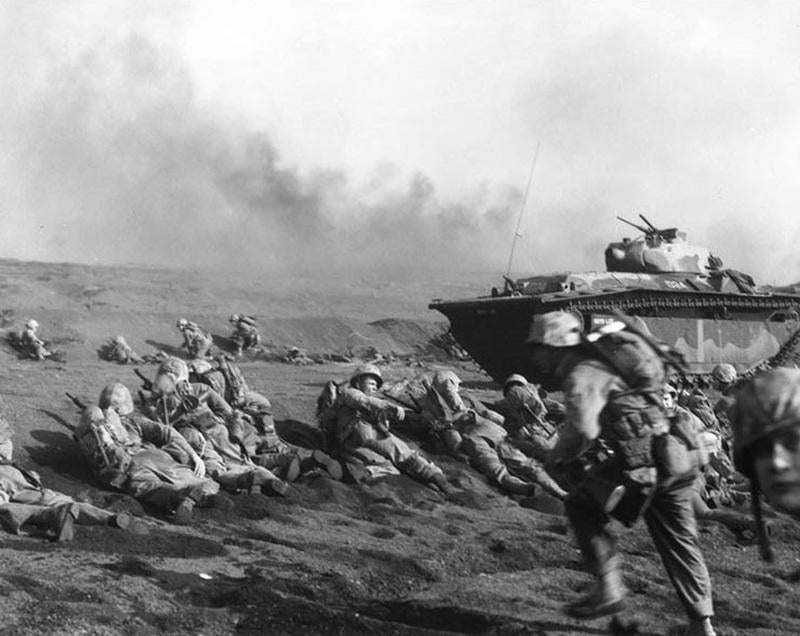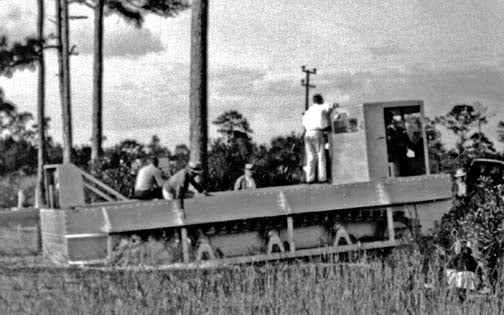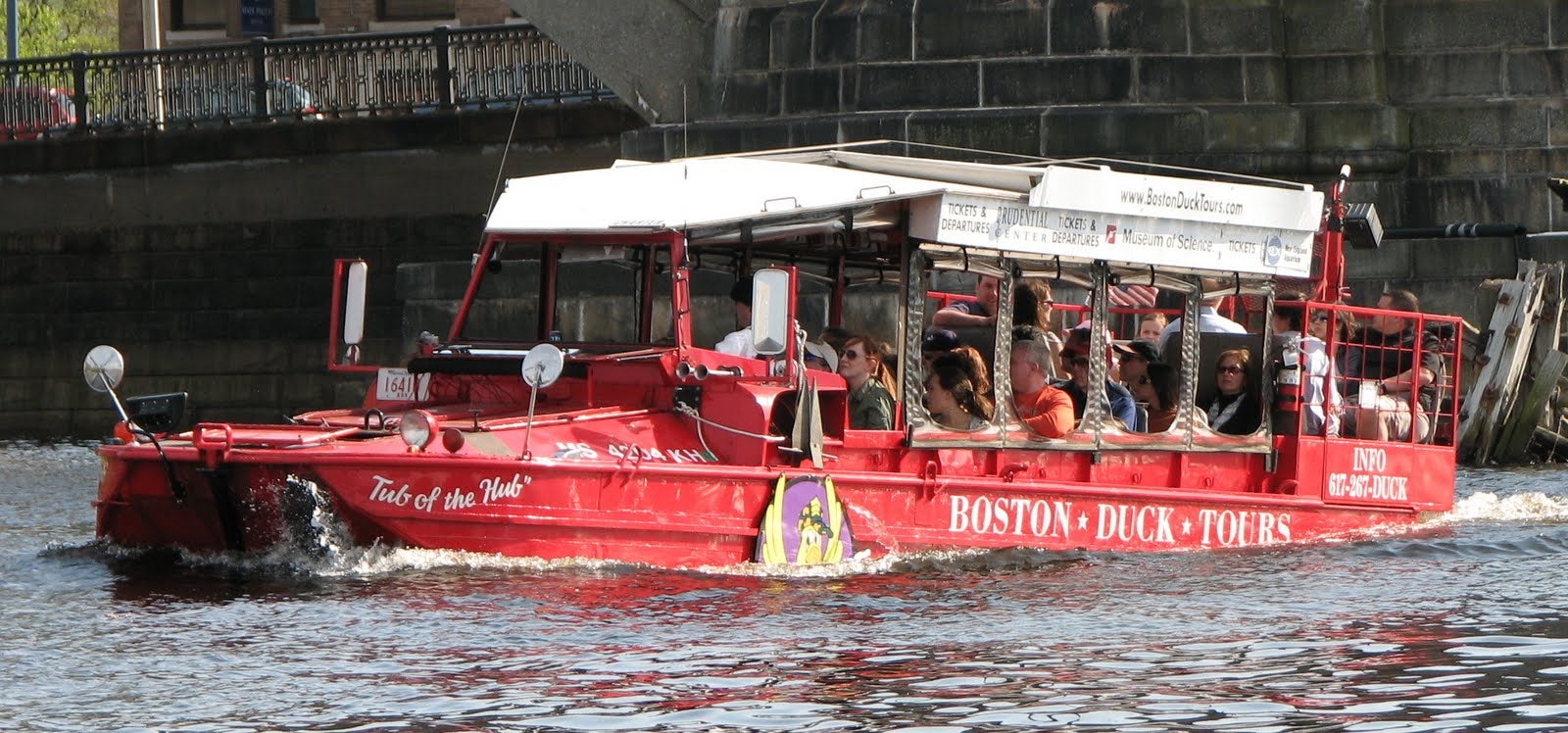 "No, I don't thank you for the fish at all" (notindetroit)
"No, I don't thank you for the fish at all" (notindetroit)
07/15/2014 at 09:38 • Filed to: boat that is also a truck yeah
 7
7
 11
11
 "No, I don't thank you for the fish at all" (notindetroit)
"No, I don't thank you for the fish at all" (notindetroit)
07/15/2014 at 09:38 • Filed to: boat that is also a truck yeah |  7 7
|  11 11 |

As a big part of the Marines' job is to storm enemy beaches, having something that will get them to that beach is pretty important. They're pretty good at looking for new ways and technology to do that, including the common (but no less amazing) LCAC - Landing Craft, Air Cushion, which is exactly what it sounds like. Fuel-thirsty hovercraft like the LCAC may have the raw technological and "gee-whiz" edge going for it, but the Marines are accustomed to discovering that the fanciest tool for the job might not be the best. The " !!!error: Indecipherable SUB-paragraph formatting!!! looks like a promising LCAC replacement, even if it also looks a little backwards in technological progression. Its looks may belie some pretty impressive yet simple technology, but it's not the first gargantuan tracked or truck-like vehicle the Marines have fielded, either.
!!! UNKNOWN CONTENT TYPE !!!

Image from !!!error: Indecipherable SUB-paragraph formatting!!!
!!! UNKNOWN CONTENT TYPE !!!
The granddaddy of all amphibious tractors was the rather creatively named Amphibious Tractor, though officially it was listed as the (somewhat more creative) !!!error: Indecipherable SUB-paragraph formatting!!! . The soldiers who rode in them called them amtracks (of various spellings), gators or buffaloes. The LVT was first prototyped in 1940, a good deal before America entered the war. The military and civilian leadership was smart enough to figure out that such entry was inevitable and when that time came the potential for "island hopping" from Hawaii to the Japanese home islands was very high. The US developed and built a highly refined and capable amphibious doctrine almost overnight spearheaded by innovative and radical ships and vehicles including the !!!error: Indecipherable SUB-paragraph formatting!!! . The Alligator was little more than a set of caterpillar tracks straddling a pontoon-like floating structure (containing the engine) with the operator's cab stuck on the front and everything else riding flatbed-style.

Image from !!!error: Indecipherable SUB-paragraph formatting!!!
The actual production version of the LVT added sides to transform the flatbed-on-tracks into a tub-on-tracks and eliminated the tall cab for a lower profile and armored position buried deep within that tub. The cavernous volume and simplicity of the LVT not only made it reliable and simple, but adaptable. In addition to carrying almost 10,000 lbs of cargo (including 24 fully armed and ready combat troops) additional armor can be carried as well as machine guns to provide better protection and firepower. Variants were also developed that closed off the tub with an armored structure that also formed the base for turret-mounted guns and howitzers, transforming the LVT into a light battle tank or mobile artillery. Just three years after the Army and Marines tested prototypes, LVTs became ubiquitous in nearly every land battle in the Pacific, especially becoming iconic at Iwo Jima and Okinawa. The LVT concept in one form or another has been continuously refined and its latest operational descendant, the !!!error: Indecipherable SUB-paragraph formatting!!! has been in service for decades and will eventually be replaced by wheeled armored vehicles.

Image credit Meers Dekker via Wikipedia
The LVT isn't exactly "a boat that's also a truck," in the sense of a boat being large. Yes, it's large, but not "I can't believe this thing goes on land" large. Fortunately, they've got that covered too! The !!!error: Indecipherable SUB-paragraph formatting!!! (Lighter, Amphibious Resupply, Cargo, V [5]-ton) is, quite literally, a boat that happens to be a truck in the truest sense. As in, they slapped heavy-duty low-pressure truck wheels on a boat hull and called it a day. They operate like and are used as pretty much what you'd expect a boat that happens to be a truck to be like. Almost a thousand were built for the Vietnam War, but combat attrition and surplus needs have whittled that number down to 200. Not every excess hull has been scrapped - as many as 100 are now privately owned like the above example, giving tours much like the demilitarized WWII-vintage "Ducks" found crawling around D.C.'s and Boston's streets.
Oh, yeah, and the LARC-V is the smallest in its family.
The LARC-XV (XV as in 15, as in 15 tons) puts new meaning to the term land yacht . It makes even the WWII Ducks - which, mind you, are based on 2 1/2 ton three-axle trucks - look like toys in comparison.

And finally, if that's
still
too small for your tastes, there's the
!!!error: Indecipherable SUB-paragraph formatting!!!
- yes, if you've picked up on the theme naming and are up on your Roman numerals, that's
60 tons
of rated cargo load. This is no longer a boat that happens to be a truck - it's a friggin'
barge
that happens to be a truck. Literally in fact - it was originally designated the BARC, where the "B" stood for just that, barge. Look at how pathetically small that operator's cab/pilot house is! Watch as it makes even heavy construction equipment feel inadequate!
So, what can you carry with a LARC-LX? I'm glad you asked!

Somewhere, Xzibit is extremely pleased.
The LARC-XV was used in the same roles that the LCAC is used for today - in fact the LCAC ended up replacing the LARC-XV. The LARC-XV may have been huge, but it was also slow and unwieldy and consequently less efficient than using boats that decidedly were not also trucks like the !!!error: Indecipherable SUB-paragraph formatting!!! . It also needed to be carried on the top deck of ships rather than in the well deck of amphibious assault vessels, and the entire LARC family was more of an Army thing. The LCAC is supremely cool with its raw power and hovercraft wizardry, but it's lacking a certain quirky awesomeness from not being a boat that also happened to be a truck.

But now even the LCAC has apparently worn out its welcome and the Marines are going back to the drawing board with slower but (hopefully) more versatile tracked vehicles. We'll see how long the UHAC lasts, but it will be following a proven legacy left by the LARC-XV and, if nothing else, will bring its own awesomeness factor by being a boat that also happens to be a tank.
 cazzyodo
> No, I don't thank you for the fish at all
cazzyodo
> No, I don't thank you for the fish at all
07/15/2014 at 09:46 |
|
This all seems oddly familiar to me...

 ifonlyihadthemoney
> cazzyodo
ifonlyihadthemoney
> cazzyodo
07/15/2014 at 10:30 |
|
You must be mistaken . . .

 Kaufmania: Mark Webber's Stunt Double
> No, I don't thank you for the fish at all
Kaufmania: Mark Webber's Stunt Double
> No, I don't thank you for the fish at all
07/15/2014 at 10:34 |
|
I'm sold if I can get it in brown wagon and 5 speed
 NeedSSpeed
> No, I don't thank you for the fish at all
NeedSSpeed
> No, I don't thank you for the fish at all
07/15/2014 at 10:36 |
|
I understand that the UHAC that we saw was a proof of concept, but damn was that thing slow. I'm hoping that whatever makes it into production is much quicker. It seems that whatever equipment is being transferred from an amphibious assault ship to the beach would need to get there as quickly as possible, or does the LCAC bring in the tanks and heavy equipment only after the Marines storm the beach and secure it, therefore speed isn't necessary?
 Svend
> No, I don't thank you for the fish at all
Svend
> No, I don't thank you for the fish at all
07/15/2014 at 10:37 |
|
I recall seeing an article in the last couple of months where there are two of these sat side by side on some dock land in Liverpool, England. They are plastered with grafitti, a few parts have been stripped out and the massive tyres are flat and cracked but in pretty good condition. If I recall the owner of these parked them up and now Liverpool council want to redevelop the land and has told the guy to get them moved.
 David E. Davis
> cazzyodo
David E. Davis
> cazzyodo
07/15/2014 at 10:55 |
|
i'm more familiar with those being in this state.

 David E. Davis
> No, I don't thank you for the fish at all
David E. Davis
> No, I don't thank you for the fish at all
07/15/2014 at 10:58 |
|
The Lane Motor Museum likes to use their LARC-LX to crush cars.
 M S
> No, I don't thank you for the fish at all
M S
> No, I don't thank you for the fish at all
07/15/2014 at 11:22 |
|
There is a LARC-XV near my hometown outside of Jacksonville. You don't realize just how massive that thing is until you're standing in the belly with walls all around you, pretty impressive.
 Rage of ManBearPig
> No, I don't thank you for the fish at all
Rage of ManBearPig
> No, I don't thank you for the fish at all
07/15/2014 at 13:49 |
|
The Brits are decades ahead in this regard...

 Graflex
> cazzyodo
Graflex
> cazzyodo
07/19/2014 at 02:34 |
|
"For its next heavy hauler, the Marines look to the past."
Its kinda in the headline. . . . .So, yeah, it SHOULD seem oddly familiar.
 cazzyodo
> Graflex
cazzyodo
> Graflex
07/19/2014 at 22:15 |
|
-_-